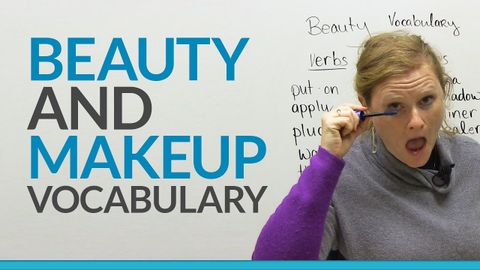
Subtitles & vocabulary
Learn English Vocabulary: Beauty and Makeup
00
Halu Hsieh posted on 2014/06/24Save
Video vocabulary
apply
US /əˈplaɪ/
・
UK /ə'plaɪ/
- Transitive Verb
- To spread a substance or liquid over a surface
- To commit your time and effort to doing something
A1TOEIC
More put
US /pʊt/
・
UK /pʊt/
- Transitive Verb
- To move or place a thing in a particular position
- To rate something in importance or value
- Phrasal Verb
- to make a light stop shining by pressing or moving a switch
A1
More rip
US /rɪp/
・
UK /rɪp/
- Verb (Transitive/Intransitive)
- To tear or split roughly or cause to tear or split
- To become torn, opened, or split apart forcefully
- Noun (Countable/Uncountable)
- A long tear in something, e.g. a piece of cloth
- (Slang) A puff of marijuana.
B1
More verb
US /vɚb/
・
UK /və:b/
- Noun
- Word that expresses an action or state
- Transitive Verb
- To convert a word into a verb.
A1
More Use Energy
Unlock All Vocabulary
Unlock pronunciation, explanations, and filters
